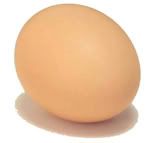Interesting facts about birds
September 3, 2009 | In: Animal facts for kids

The egg of the hummingbird is the world’s smallest bird’s egg; the egg of the ostrich, the world’s largest.
An ostrich egg needs to be boiled for 2 hours to get a hard-boiled egg.
Penguins, ostriches, and dodo birds are all birds that do not fly.
The only bird that can fly backwards is the Hummingbird.
Bald Eagles can fly with 8 pounds of food.
There are approximately 7,000 feathers on an eagle.
Kiwis are the only known bird to have nostrils located at the tip of their beak.
Flamingos are able to fly at a speed of approximately 55 kilometers an hour. In one night they can travel about 600 km.
A seagull can drink salt water because it has special glands that filter out the salt.
Birds save energy by flying in a “V” formation. Pigeons can reach speeds up to 100 mph.
Birds, except nocturnal species, have no external ear, but hear well
Larger parrots such as the macaws and cockatoos live more than 75 years.
The largest bird in the world is the flightless ostrich which stands up to 2.4 m (8 ft) tall and may weigh 136 kg (300 lb).
Birds get fresh air in their lungs when they inhale – and when they exhale!
Unlike mammalian lungs, in which the air capillaries come to a dead-end, bird lungs form a network of air capillaries which permit a continuous circuit of air through the lung. This circuit, along with special air sacs and a sophisticated system of valves, ensures that birds get a continuous flow of fresh air through their lungs.
Birds need these highly efficient lungs to meet the extraordinary physical demands of flight.
The highest a bird has been known to fly is 37,000 feet (about 11 kilometers). That is more than two kilometers higher than Mount Everest, the tallest mountain! This record was set by a Ruppell’s griffon vulture.
Bar-headed geese have been known to fly across the Himalayas at 29,000 feet. Other species seen above 20,000 feet include the whooper swan, the bar-tailed godwit, and the mallard duck.
Trees with deep, dry bark are used by acorn woodpeckers to store food for the winter. These trees, called granaries, may have over 50,000 holes drilled into them!
Unlike most birds, which are very territorial, acorn woodpeckers live in colonies of three to ten birds. These colonies work together to store their food in the tree granaries for the winter.
Canaries can learn new songs each year by growing new brain cells!
Every year during the molt, canaries grow new “glial” cells in their brains, allowing them to learn new songs and sometimes causing them to forget the songs they know. Champion canary breeders make sure to train their canaries well during and after the molt to ensure that they don’t forget their best tunes.
Scientists were surprised by the discovery of this trait in canaries, because it was previously believed that these brain cells progressively died off in all animals as they aged, and could not grow back again.
Tailor Bird
The golden-headed cisticola (or “tailor bird”) of Australia collects spiderwebs and uses them to sew together its nest!
This small bird, Cisticola exilis, uses its beak as a drill to make tiny holes in leaves and grass blades. Then it carefully separates the strands of a spiderweb and threads the web through the holes, pulling it tight by hovering and backing away.
The whole operation takes about five days. When it’s done, the bird has a neat, cozy nest!





2 Responses to Interesting facts about birds
admin
July 26th, 2010 at 11:27 am
Peregrine Falcons attack their prey at speeds of up to a blazing 300 kilometers per hour (about 200 miles per hour).
admin
July 27th, 2010 at 1:52 am
The male Mallee fowl of Australia digs a pit and then covers it with up to 3 tons (2700 kgs) of leaves, soil, and sand in preparation for the eggs of his mate. Once the female has laid her eggs inside this “compost heap” nest, the heat from the decaying vegetation incubates the eggs.
The male Mallee fowl not only builds the nest, but also regulates its temperature. He measures the temperature with his tongue, and then adds or removes sand from the top of the nest to maintain a constant temperature of about 33 degrees Celsius (91 degrees Fahrenheit).